
VISUAL GALLERY
Port of Los Angeles
This is a visual documentary of the construction of a 7-mile, 18-feet diameter tunnel from the A.K. Warren Water Resource Facility in Carson to existing ocean outfalls at Royal Palms Beach. Project construction began in late 2019 and is expected to continue through 2027.
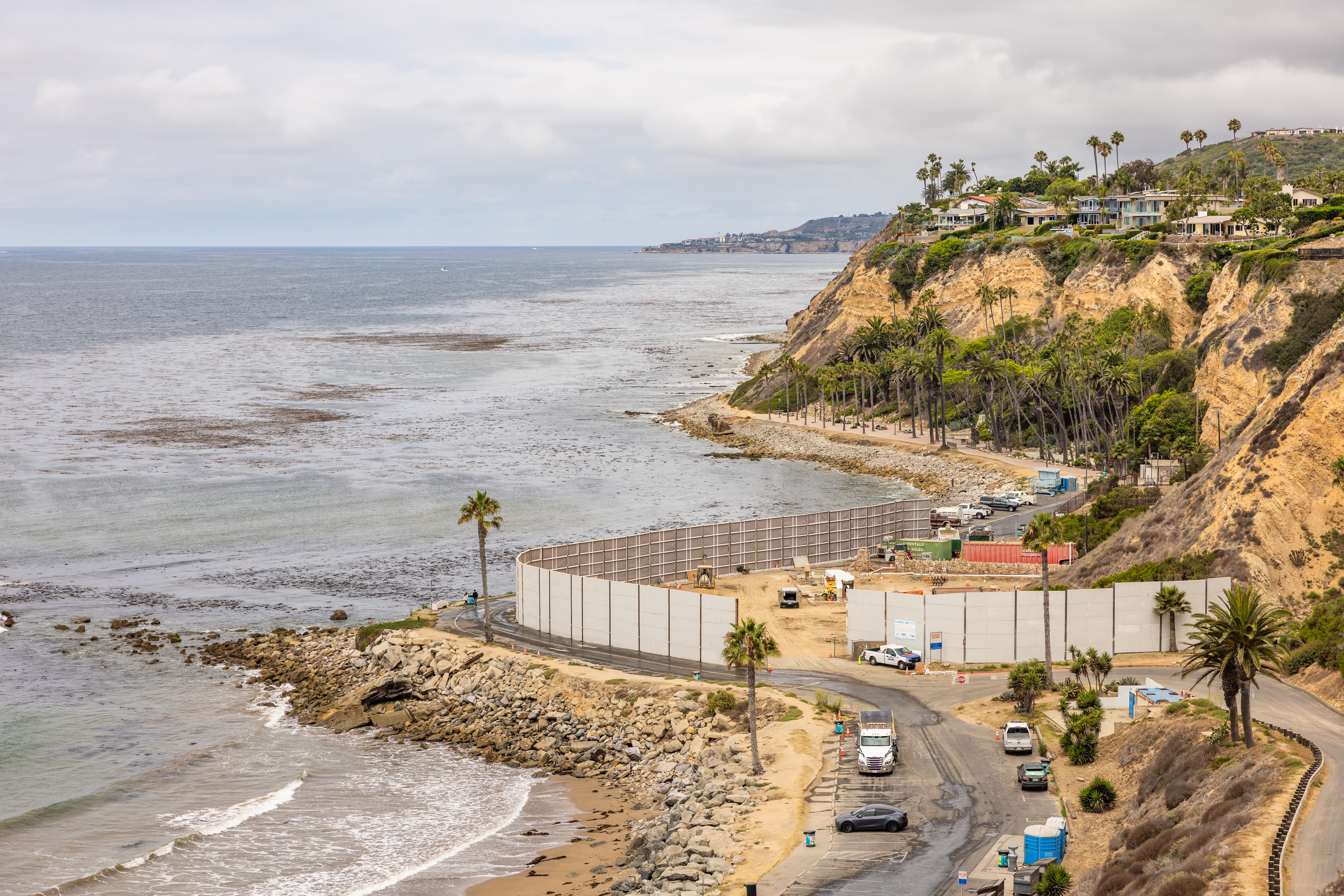
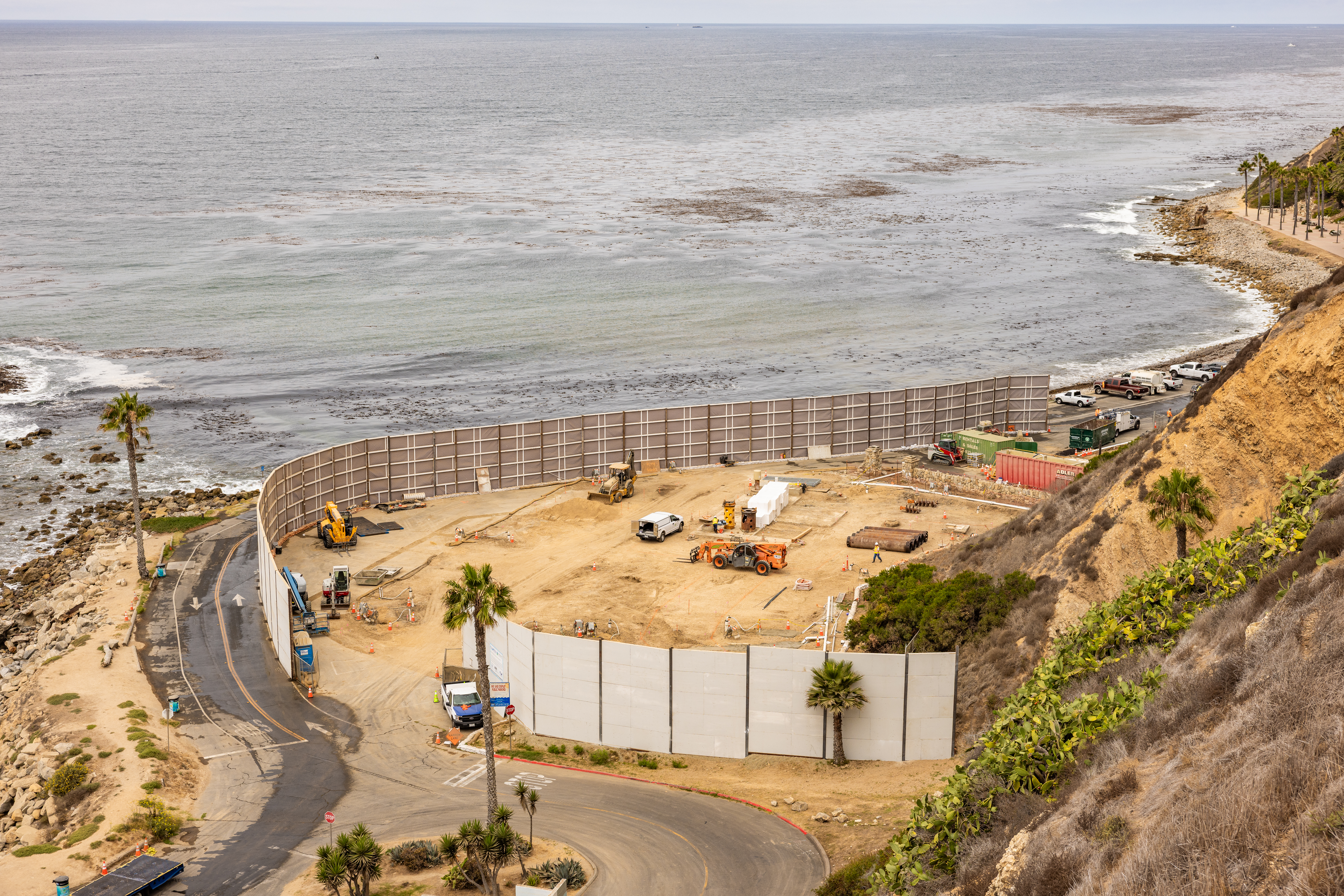
View of construction site at Royal Palm Beach. [6/2025]
The tunnel boring machine Rachel makes significant progress in its 7-mile journey.

View inside tunnel. [5/2023]
In 2022, tunneling was underway.
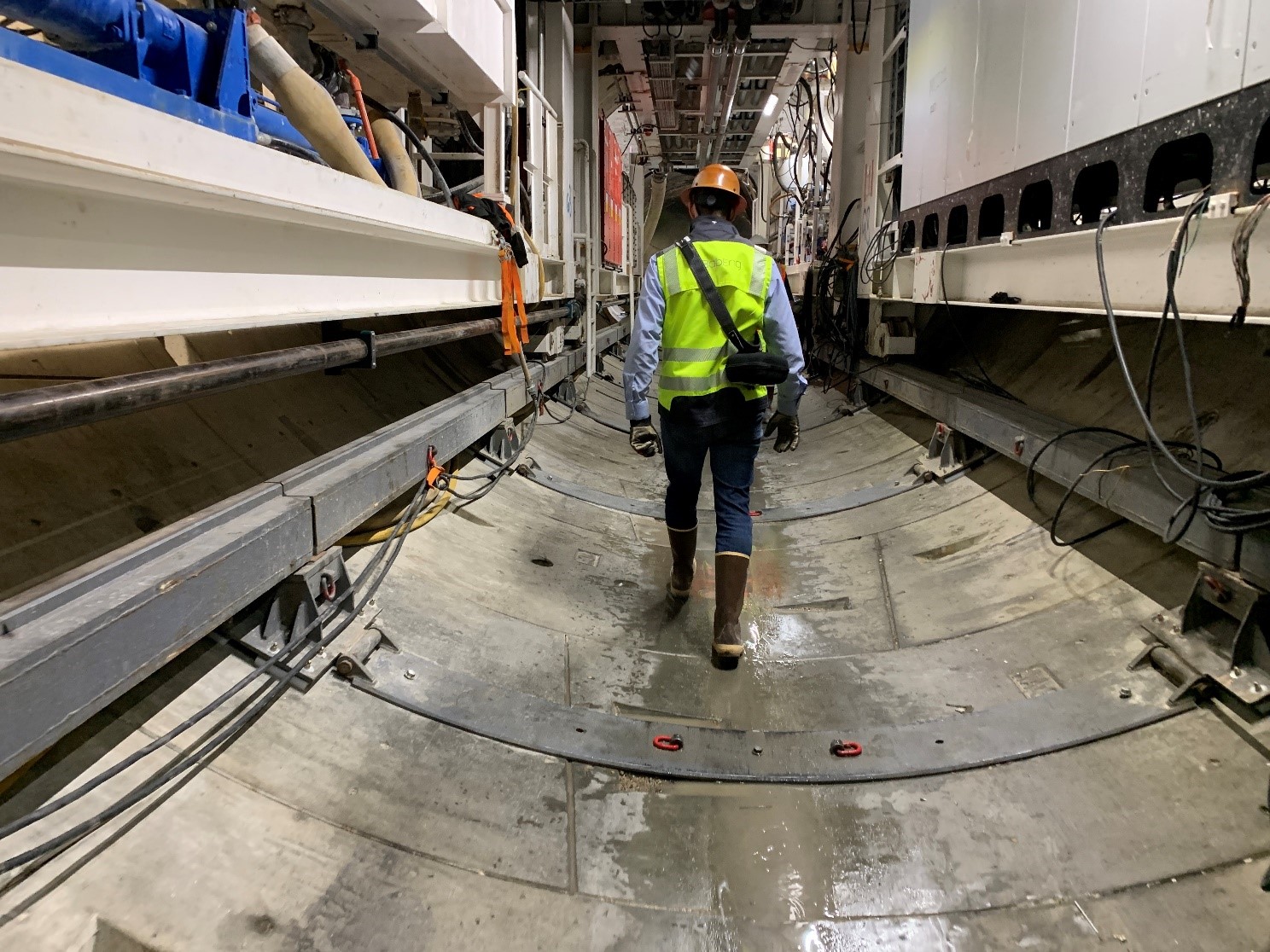
About 2,000 feet was completed by April 2022. Mining staff is shown walking underneath the trailing gear, a mini city that follows the TBM as it digs. [4/2022]
In 2021, Rachel was revealed to the public in a launch ceremony. Later that summer, Rachel was lowered down the shaft to its starting depth, assembled, and tested. In the late fall, Rachel began tunneling.
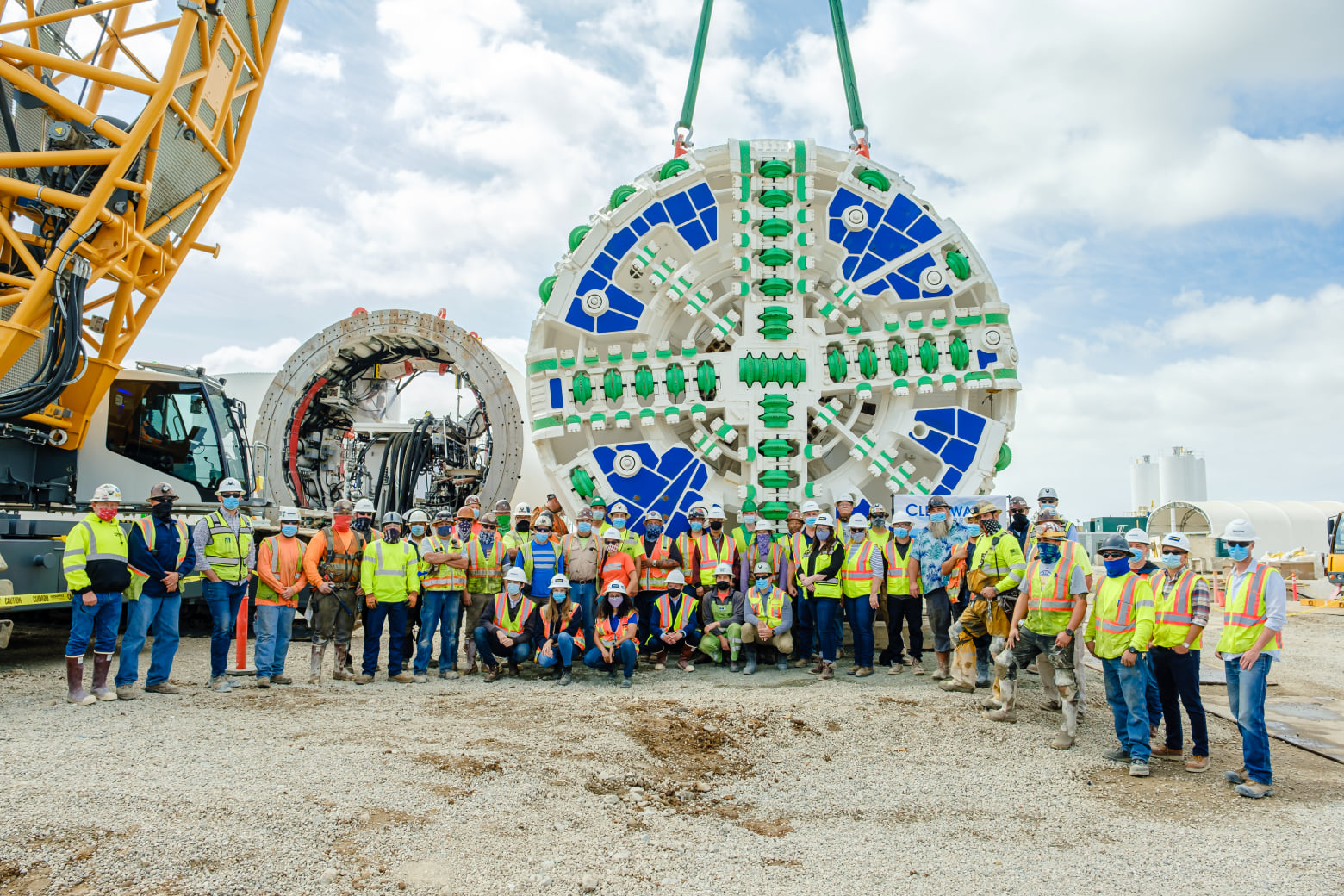
Contractor's mining crew standing in front of TBM prior to the launch ceremony. [4/2021]

On April 15, Rachel was revealed to the public along with the winners of the art contest where LA County students submitted artwork that showed why it's important to keep our rivers and oceans clean. [4/2021]
Highlights of the April 15th launch event of the Clearwater tunneling machine are shown in this 2-minute video. To see the entire event and the virtual tour that followed, click here.
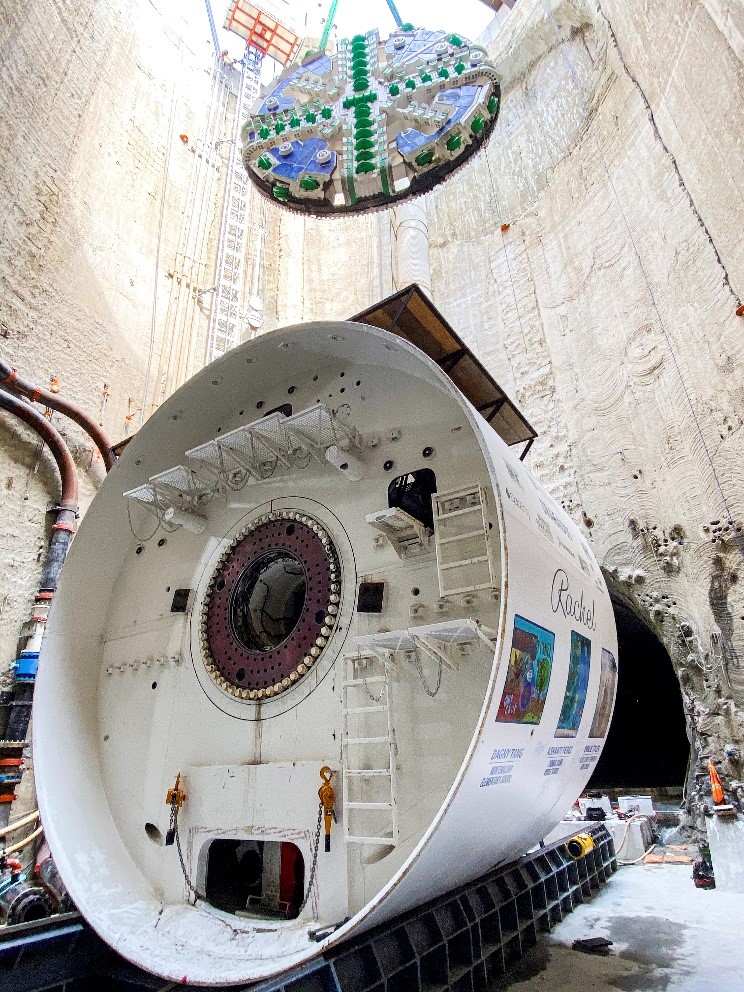
On June 21, Rachel was lowered to its starting depth, where it would be assembled and tested prior to tunneling.
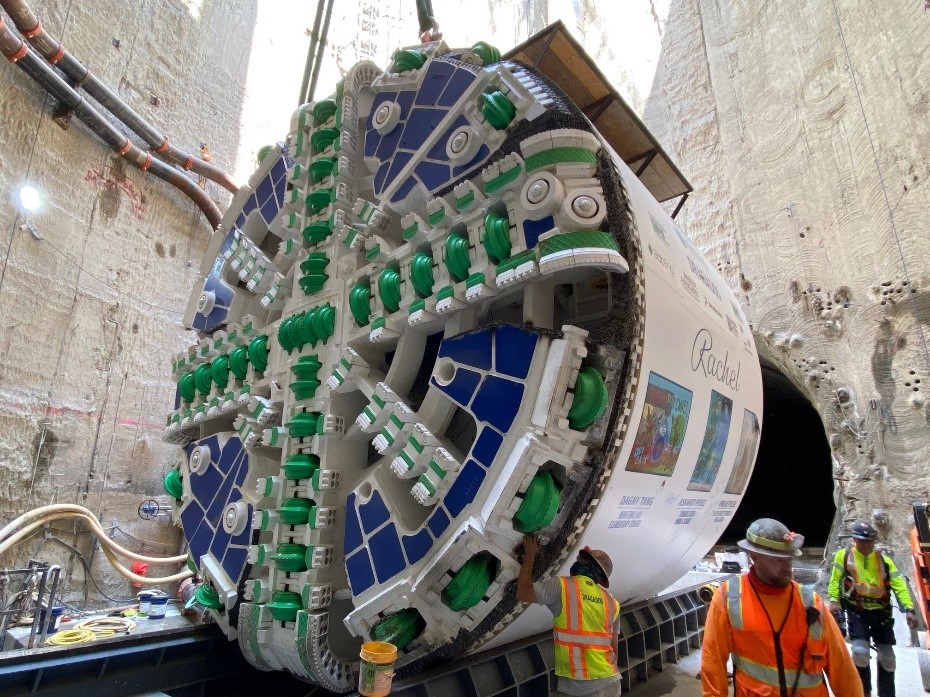
Rachel was assembled at the bottom of the access shaft. [6/2021]

Once the front of the TBM was assembled and inserted into a short starter tunnel, it's in position to start tunneling. [7/2021]
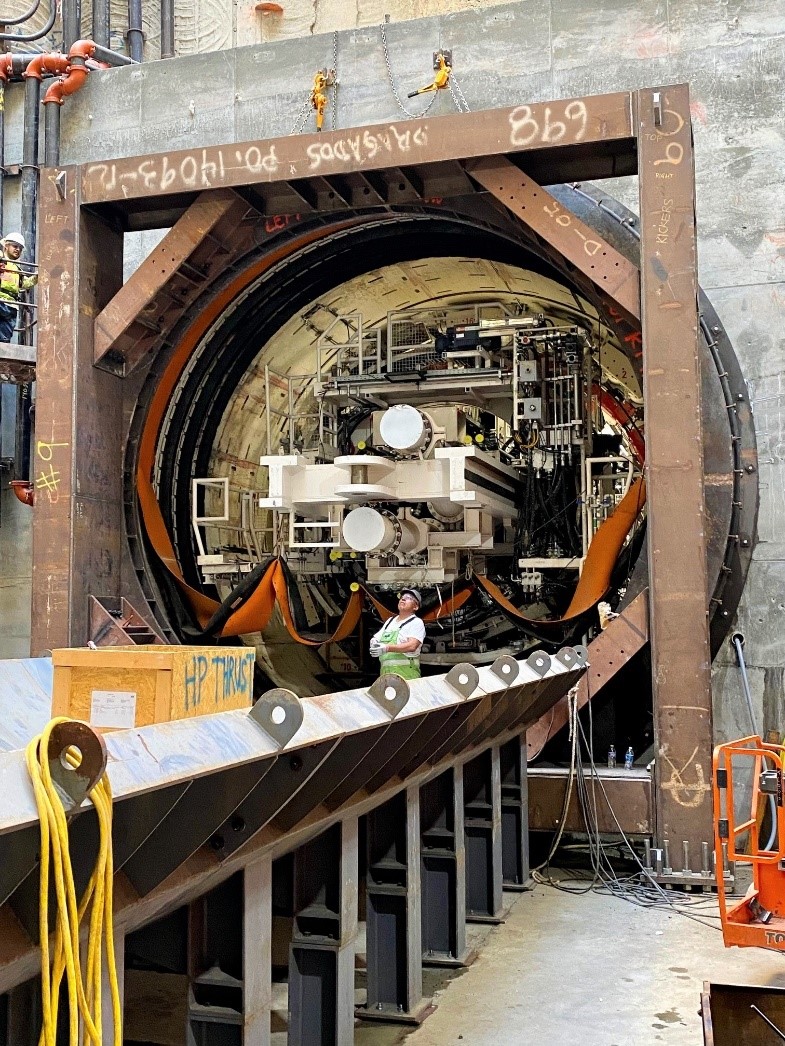
The TBM pushed off this steel frame to begin tunneling. [7/2021]
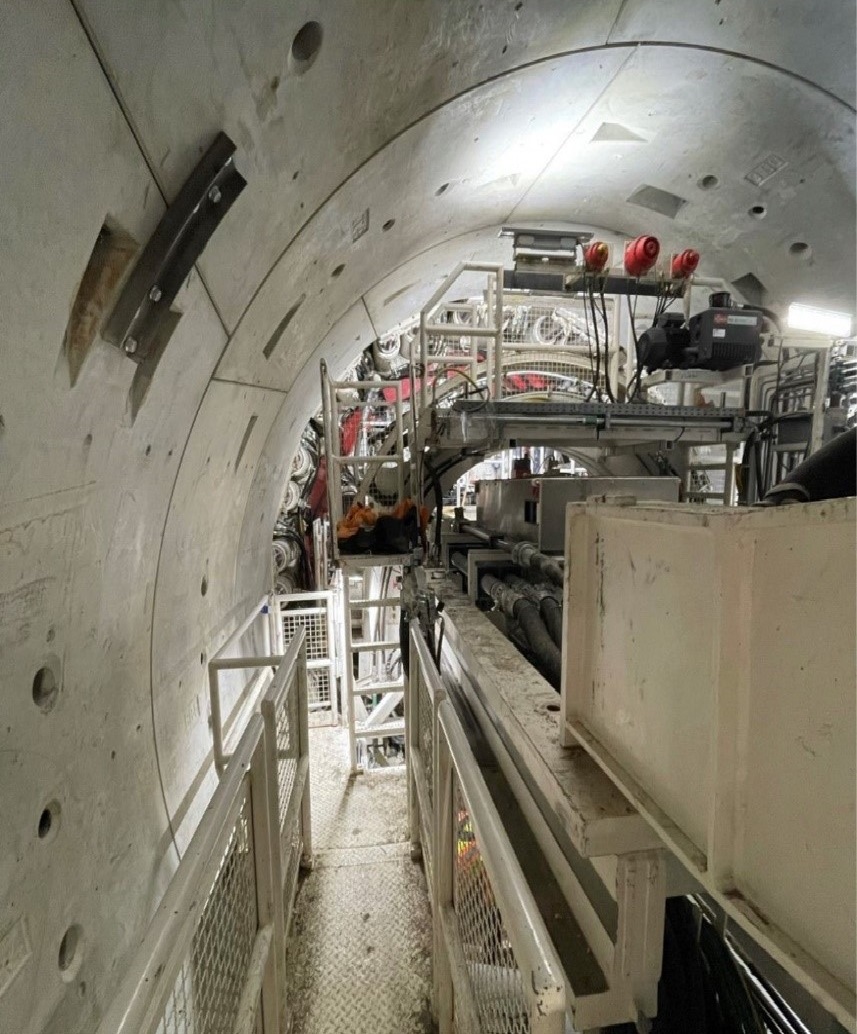
Here is the first few feet of tunnel completed. [11/2021]
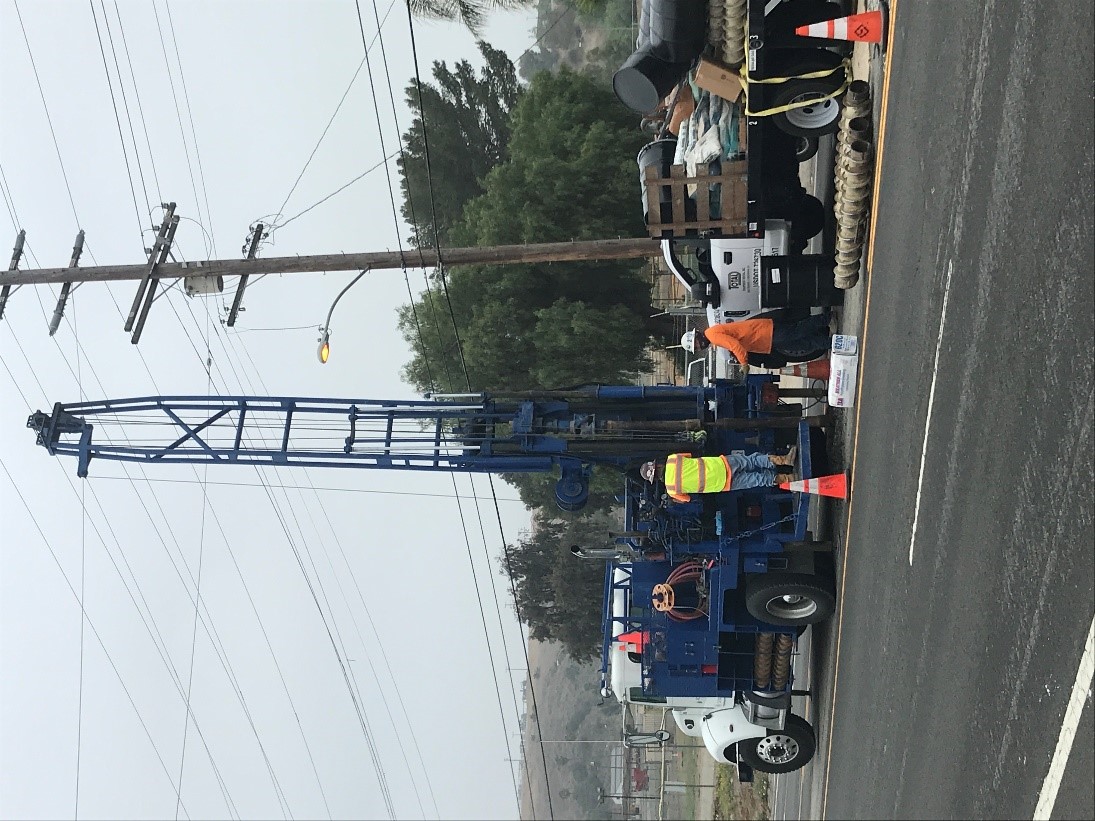
Ground monitoring sensors were installed along the tunnel alignment as an additional safeguard to ensure there are no impacts to the surface. [11/2021]
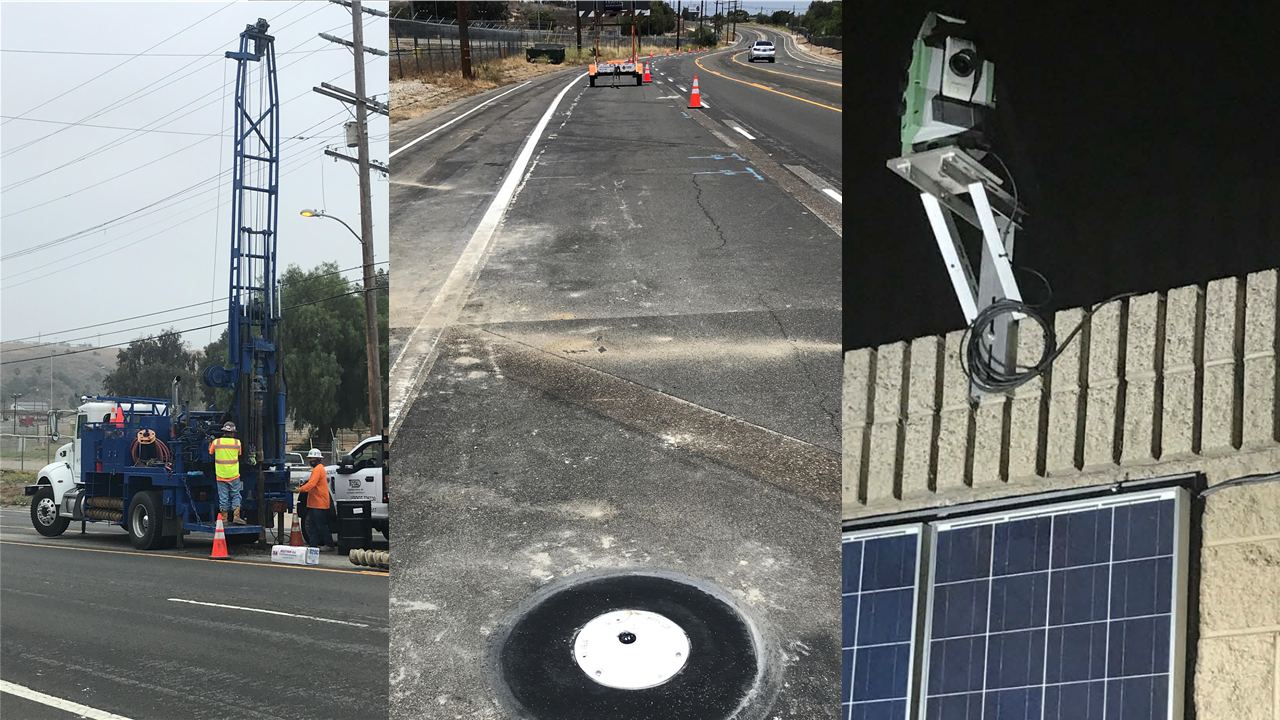
Monitoring sensors were also installed on structures. This is part of the planned tunneling process. [11/2021]
In 2020, efforts focused on completing the shaft construction, particularly installing the shaft floor.

Since most of the shaft is below the water table, a tremie (a long hollow tube) was used to pour concrete directly to the bottom of the shaft to create the slab for the floor. [6/2020]

A scuba diver inspected the rebar at the bottom of the shaft before the tremie began operation. [6/2020]

In 2020, we also installed the pipe ("Connection A") that will connect the Joint Water Pollution Control Plant to the new shaft and tunnel. The "Connect A" pipe goes underneath Lomita Boulevard. [6/2020]
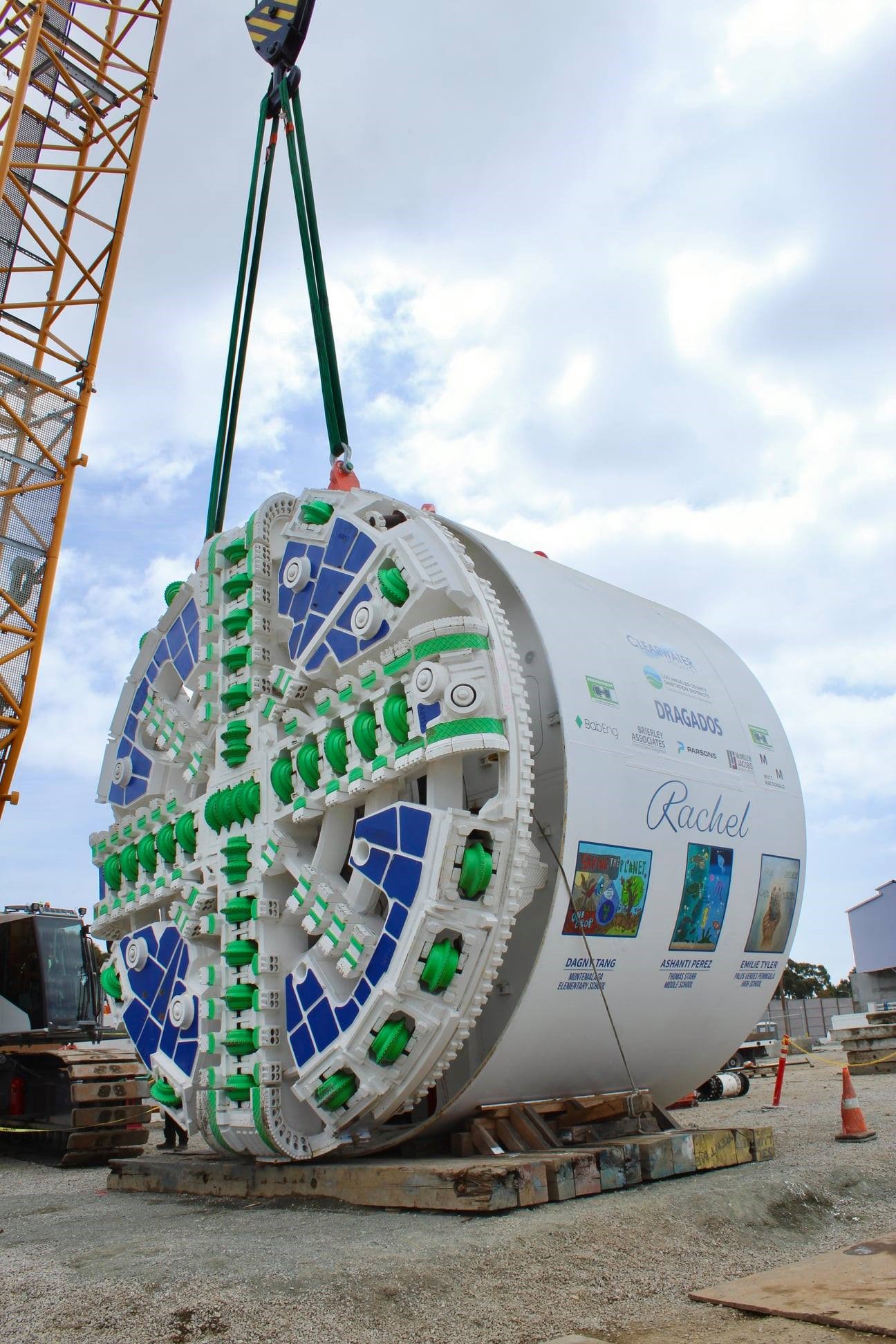
Like ships, tunnel boring machines (TBMs) are named before they are put into service. We gave students across Los Angeles County the opportunity to name the TBM by having a naming contest. Hanna Hsu of High Oaks Elementary School won the naming contest with her submission of Rachel, after Rachel Carson, an author credited with sparking a global environmental movement. [Contest was in fall 2020]
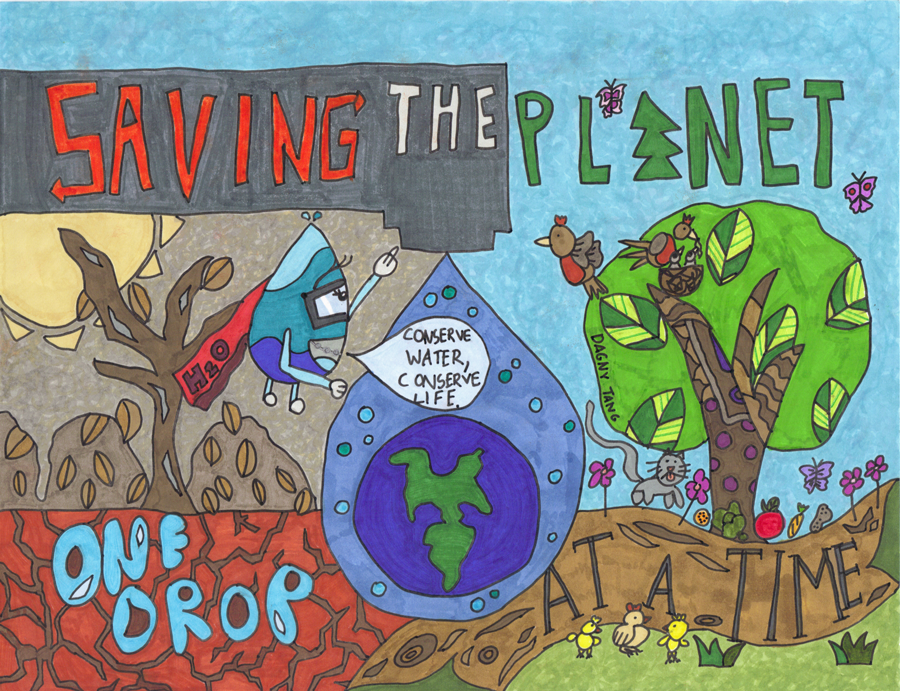
Students submitted artwork that shows why it's important to keep our rivers and oceans clean. The top three winning art was placed on the side of tunnel boring machine. Dagny Tang of Montemalaga Elementary School was the first place winner in the elementary school category. Dagny's artwork is shown above. Click here to see other winning entries. [Contest was in fall 2020]
In 2019, efforts focused on the construction of a shaft so the tunnel boring machine could be lowered to its starting depth. Because the shaft is 135 feet deep, most of the shaft is below the water table. Consequently, specialized machinery was required build to the shaft.
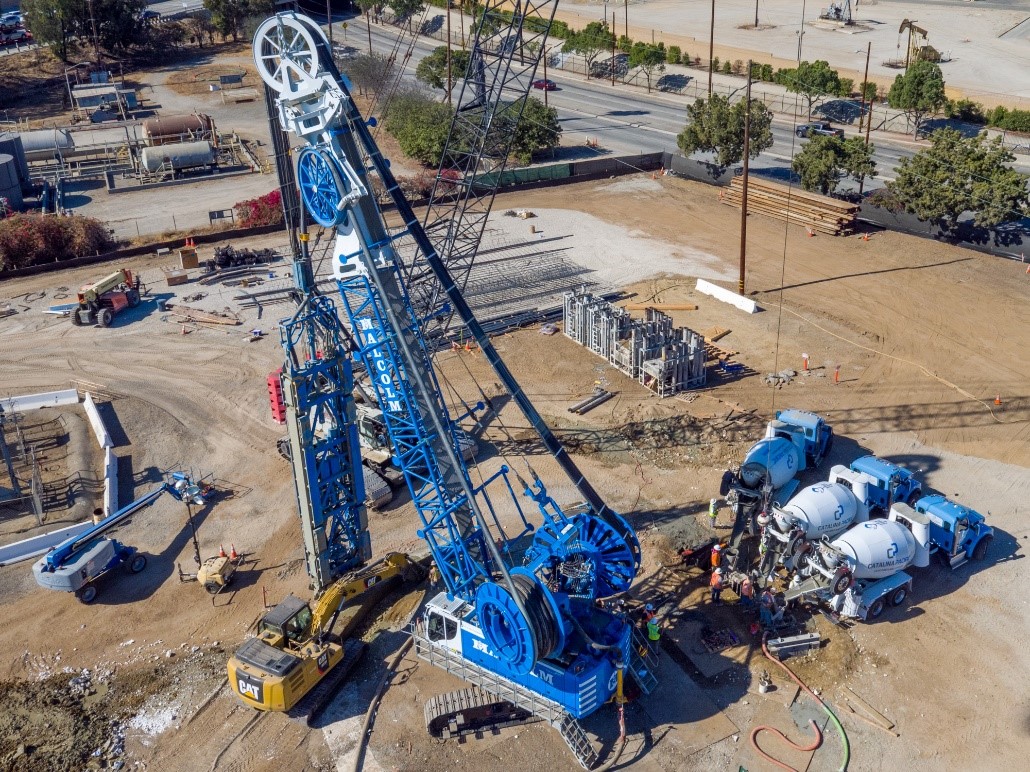
Shaft construction began with a hydromill digging a 135-foot-deep trenches around the perimeter using a rectangular drill bit. These trenches later became the walls of the 60-foot-wide access shaft. [11/2019]
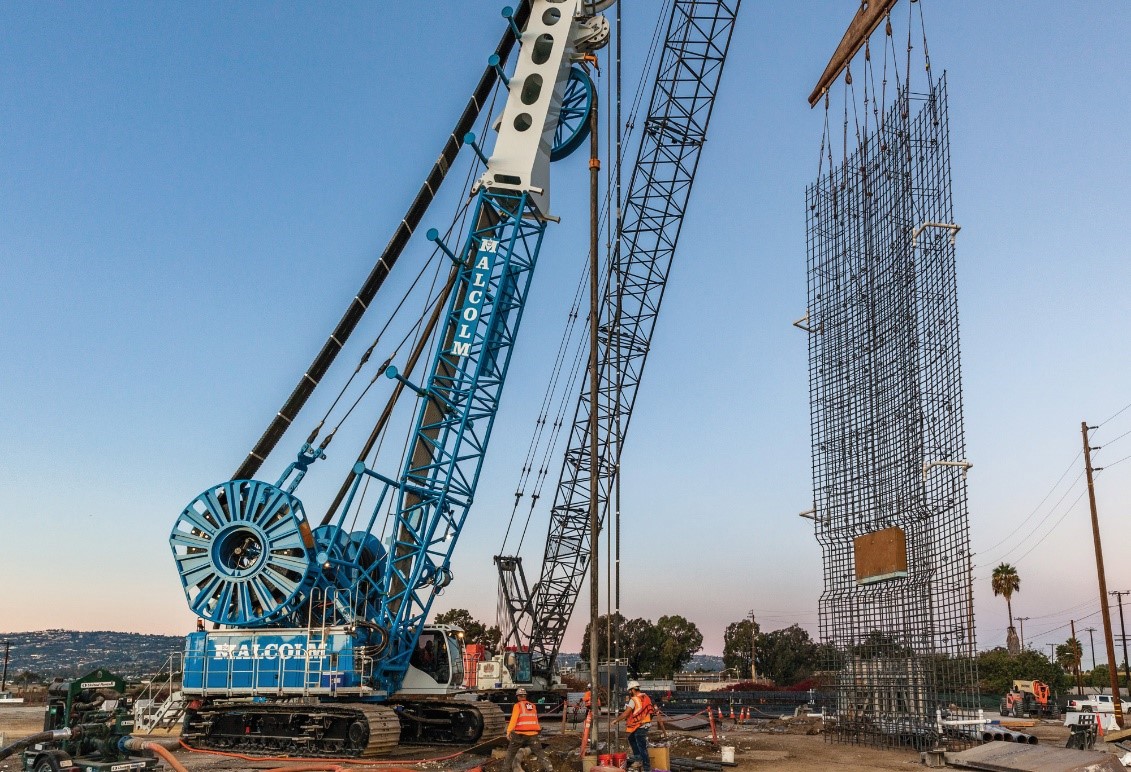
A rebar cage was lowered into each trench, providing structural support. Afterwards, the trench was filled with concrete, completing a section of shaft wall. [11/2019]